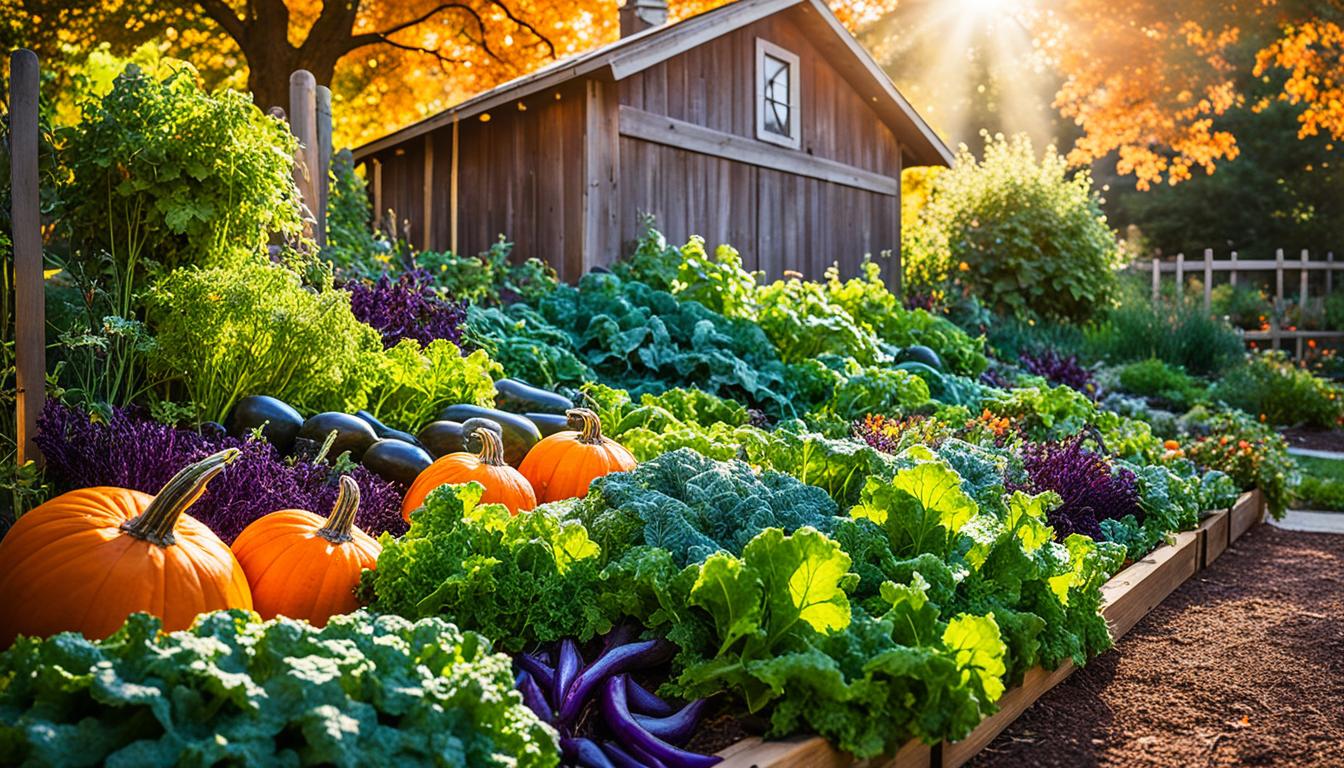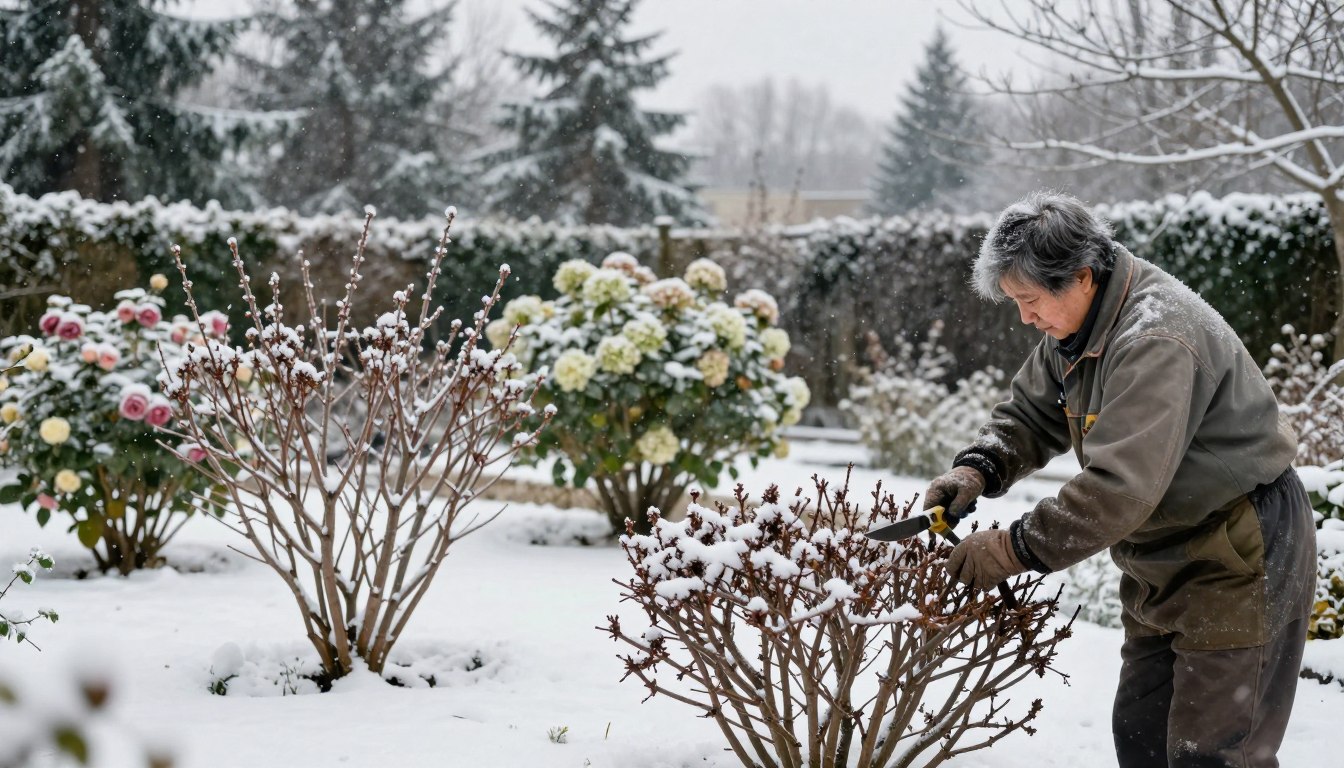As summer ends and fall begins, gardeners of all levels start planning their fall gardens. Whether you’re tending to a pot on your balcony or a backyard plot, it’s key to know how to manage a fall garden. A well-prepared garden can lead to a great harvest, says Skip Richter, a Texas A&M AgriLife Extension Service expert. This guide will share top tips for a successful fall vegetable garden.
Key Takeaways
- Fall vegetable gardening requires different techniques than spring gardening
- Proper soil preparation and sunlight exposure are crucial for a successful fall harvest
- Choosing the right cool-weather crops and varieties is essential for a bountiful autumn yield
- Implementing fall gardening techniques like using mulch and extending the growing season can help extend the harvest
- Regular maintenance and planning ahead are key to a thriving fall vegetable garden
Importance of Sunlight and Soil Preparation
Starting a vegetable garden begins with knowing how sunlight and soil matter. By making these elements better, gardeners can get a great harvest.
Plan for Adequate Sunlight
Most vegetables need at least six hours of direct sunlight each day. Think about where the sun shines and any shadows from buildings or trees. “Crops and plants grown for their roots and fruits should be planted in areas that receive the most sunlight,” says gardening expert, Richter.
Give Roots and Fruits the Most Sun
Vegetables that produce roots or fruits need lots of sunlight. Putting these in the sunniest spots helps them get the energy they need to grow well.
Use Leafy Greens in Sun or Slightly Shadier Areas
While most veggies like full sun, leafy greens can do well in a bit of shade. “If you have to plant something a little more into the shade, do it with your leafy greens, which can tolerate a little less sunlight,” Richter suggests.
Amend Your Soil with Compost
Getting the soil ready is as important as giving it enough sun. “By the time you put your first plant in the ground, you’re already 75% of the way toward success or failure,” Richter stresses. Adding compost to the soil helps its structure, drainage, and nutrient levels. This makes your vegetables grow healthier.
“At that point, you’ve either prepared good-quality soil for your plants or you haven’t.”
Choosing the Right Crops and Varieties
Choosing the right crops and varieties is key to a great fall vegetable garden. Picking plants that fit your region helps you succeed, even with local climate challenges.
Choose Regionally Adapted Plants
In Texas, the fall season is short, so picking the right plants is crucial. “Our fall season is short between summer heat and winter’s first frost,” says Richter, a horticulture expert. “We need quick-harvesting crops that fit our area well.”
Visit Your County Extension Office for Help
Local county extension offices are great for advice on the best vegetables for your area. “Richter suggests contacting county AgriLife Extension offices for help with fall gardening,” he advises.
Check Out the Online Fall Vegetable Gardening Guide
The online Fall Vegetable Gardening Guide is a great resource. It gives detailed advice on choosing the best cool-season crops, vegetable varieties, and crop selection for your region.
By picking the right regionally adapted plants and using resources like county offices and online guides, gardeners can have a successful fall harvest.
Fall Vegetable Gardening Techniques
When summer ends, fall is a great time to start a vegetable garden. The cooler weather is perfect for growing cool-season crops like lettuce, spinach, kale, broccoli, carrots, and radishes.
Plant Cool-Season Crops
These vegetables do well in autumn, letting you garden into the cold months. Consider planting these cool-season crops in your fall garden:
- Leafy greens (lettuce, spinach, kale)
- Brassicas (broccoli, cauliflower, Brussels sprouts)
- Root vegetables (carrots, radishes, beets)
- Peas and beans
Extend the Growing Season with Protective Measures
To keep your harvest going, use season extension methods like row covers, cold frames, or low tunnels. These tools protect your plants from frost and keep them warm at night. This can add weeks or even months to your growing season.
Use Mulch for Moisture Retention and Weed Suppression
Putting organic mulch, like straw, leaves, or wood chips, around your vegetables helps keep soil moist and stops weeds. As it breaks down, mulch also adds nutrients to the soil for your plants.
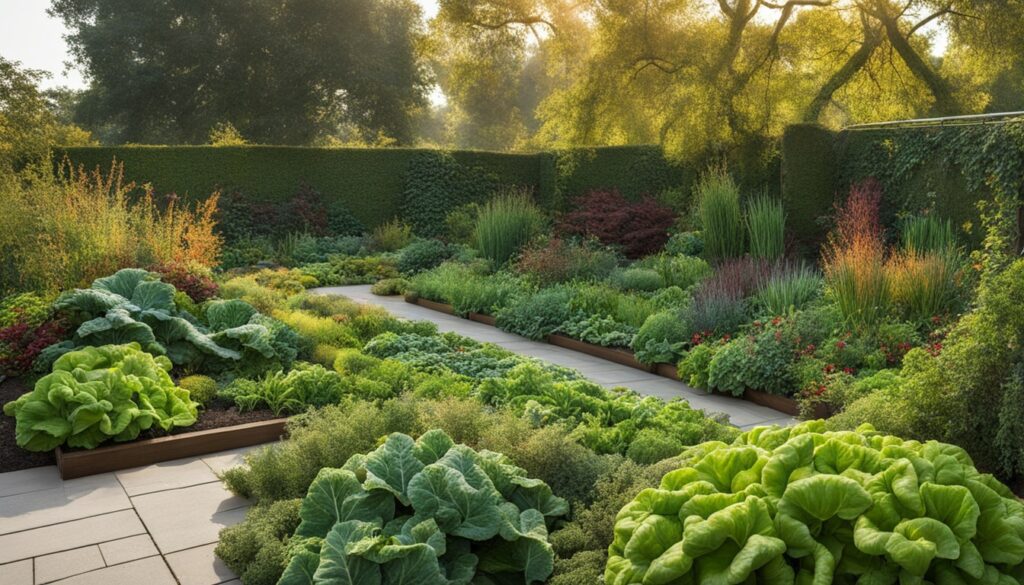
“Mulch is a gardener’s best friend, helping to retain moisture, moderate soil temperature, and keep weeds at bay.”
Using these techniques for fall gardening can give you a big harvest even in the cooler months.
Fall Vegetable Gardening
As fall comes, it’s important to keep your vegetable garden healthy. Regular watering is crucial for your plants to thrive. This ensures they stay productive.
Even though evaporation is less in fall, your plants need consistent moisture. Check the soil often and water when necessary. Make sure your plants get enough sunlight optimization as days get shorter.
Optimize Sunlight as Days Get Shorter
With less daylight in fall, using the sunlight well is key. Trim branches or plants that block sunlight from your garden. This helps your fall crops grow and develop well.
Harvest at the Right Time
Harvesting your fall vegetables at the right time is key for great taste and quality. Some veggies, like Brussels sprouts and parsnips, taste better after a light frost. Watch your plants closely and pick them at their best before a hard freeze hits. This keeps your fall harvest fresh.
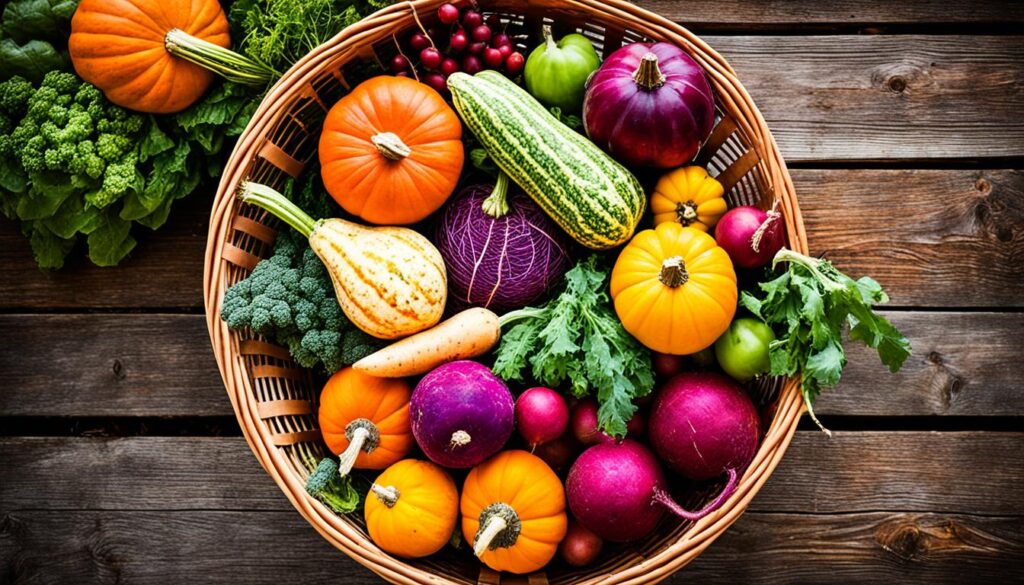
“Proper timing and attention to your fall vegetable garden can lead to a bountiful harvest, even as the seasons change.”
Garden Maintenance and Planning
As leaves change color and the air gets cooler, it’s time to focus on garden care and planning for fall planting. Getting your soil ready, pruning, and cleaning up are key steps. They help prepare your garden for a great harvest next year.
Prepare Your Soil for Fall Planting
Before you start planting in the fall, add compost or well-rotted manure to your soil. This adds important nutrients and makes the soil better for your plants. A garden with rich, healthy soil is crucial for a good harvest.
Fall Pruning and Cleanup
When the growing season ends, remove any dead plants or leaves to stop diseases and pests from surviving the winter. Cut back perennials to help them grow well in spring. A clean garden in the fall means a better garden next year.
Consider Cover Crops and Plant Flowering Bulbs
- After you’ve picked your veggies, think about planting cover crops like clover or winter rye. These crops protect and make the soil better over winter. They stop erosion, keep weeds down, and make the soil richer.
- Planting bulbs in the fall, like tulips, daffodils, and crocuses, is a great idea. These flowers will make your garden bright and colorful in the spring. They mark the beginning of a new growing season.
Preparing your soil, pruning, cleaning up, and planting cover crops and bulbs gets your garden ready for the next year. It ensures your garden will be healthy and well-organized.
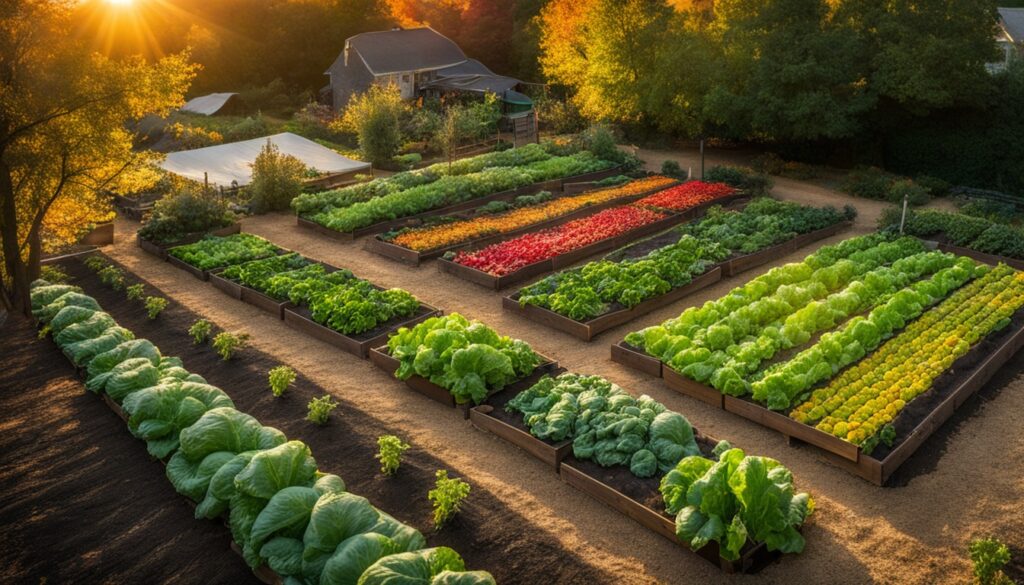
Conclusion
Fall gardening lets you enjoy fresh produce even when it’s cool outside. By picking the right crops and taking good care of your garden, you can have a great harvest. This article gives you tips to make the most of autumn and keep gardening going past summer.
It’s important to focus on sunlight and soil before planting. Choose plants that grow well in your area and use smart gardening methods. This guide has given you the tools to grow a successful fall vegetable garden. Don’t forget to water, get enough sunlight, and pick your crops on time for the best results.
With some planning and hard work, you can keep gardening into the fall. Enjoy the cooler weather and use these tips for a big harvest. This will feed you and your family well through the autumn.
FAQ
Q: What are the most important factors to consider when planning a fall vegetable garden?
A: Key factors include getting enough sunlight for your garden. Also, prepare the soil with compost or other amendments. And, pick the right vegetables that fit your local climate.
Q: How do I choose the best vegetables to grow in my fall garden?
A: Pick vegetables that do well in cooler weather like lettuce, spinach, kale, broccoli, carrots, and radishes. For specific advice, contact your local county extension office or use online guides for your area.
Q: What techniques can I use to extend the growing season in my fall garden?
A: Use row covers, cold frames, or other frost protectors to keep plants warm. Adding organic mulch around your plants helps with soil moisture and temperature.
Q: How often should I water my fall vegetable garden?
A: Even though it’s cooler, your plants need regular watering. Check the soil moisture and water when needed to keep them healthy.
Q: What fall garden maintenance tasks are important to prepare for the next growing season?
A: Key tasks include adding compost or manure to the soil. Remove dead plants to prevent diseases and pests. Prune perennials and think about planting cover crops or bulbs to enrich the soil over winter.


